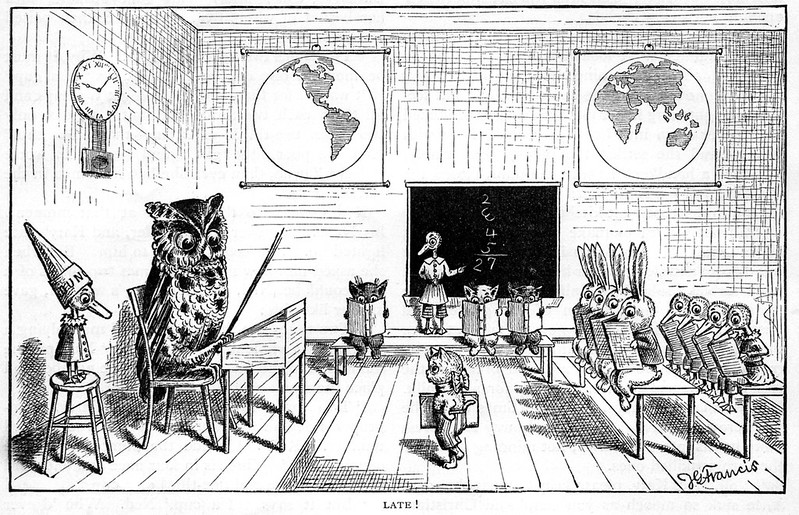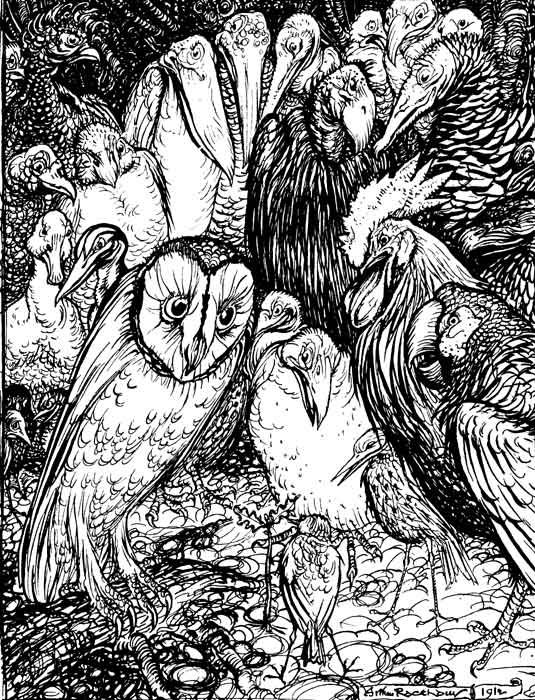Owl

One in a series of posts dedicated to pop-culture depictions of owls — as stand-ins for educated, highbrow humans — from 1924–1983. The series derives its title from Owl’s home in A.A. Milne’s Winnie-the-Pooh stories.
Owl, a live owl who dwells among toy animals, is the only character in A.A. Milne’s 1926 collection Winnie-the-Pooh (and its sequels and subsequent cartoon adaptations) who isn’t stuffed. Ironically, Owl is extremely stuffy indeed; he’s chock-full of what we might idiomatically describe as himself.
Often seen wearing reading glasses, Owl presents himself to his clueless comrades as a mentor and teacher… but the reader is given to understand that he is illiterate, scatterbrained, and prone to using words incorrectly. His home is decorated with a sign that says “WOL,” and later one that says “THE WOLERY”; the birthday card for Eeyore that he writes on Pooh’s behalf reads, “HIPY PAPY BTHUTHDTH THUTHDA BTHUTHDY”; when Rabbit comes to Owl to discuss a notice that Christopher Robin has left, Owl must trick Rabbit into reading the notice aloud; and so forth.

As far as I can tell, Milne’s Owl is the Platonic ideal of the hapless, pompous pop-culture owl from which so many subsequent characters would evolve. The character was surely inspired by the owl-as-authoritative-teacher meme that dates back to 19th-century children’s books and magazines. The image above, for example, is from an 1879 issue of St. Nicholas Magazine. And these, in turn, surely take their cue from Aesop’s fable “The Owl and the Birds,” in which the silly birds ignore the owl’s wise counsel. The image below, by Arthur Rackham, is from his 1912 edition of Aesop’s Fables. Here, the owl looks thoroughly fed up with the nincompoops who surround him.

Was Milne the first to find satirical potential in the “wise owl” meme? Readers, if you can point me to any pre-1926 owl satires, I’d be grateful!

